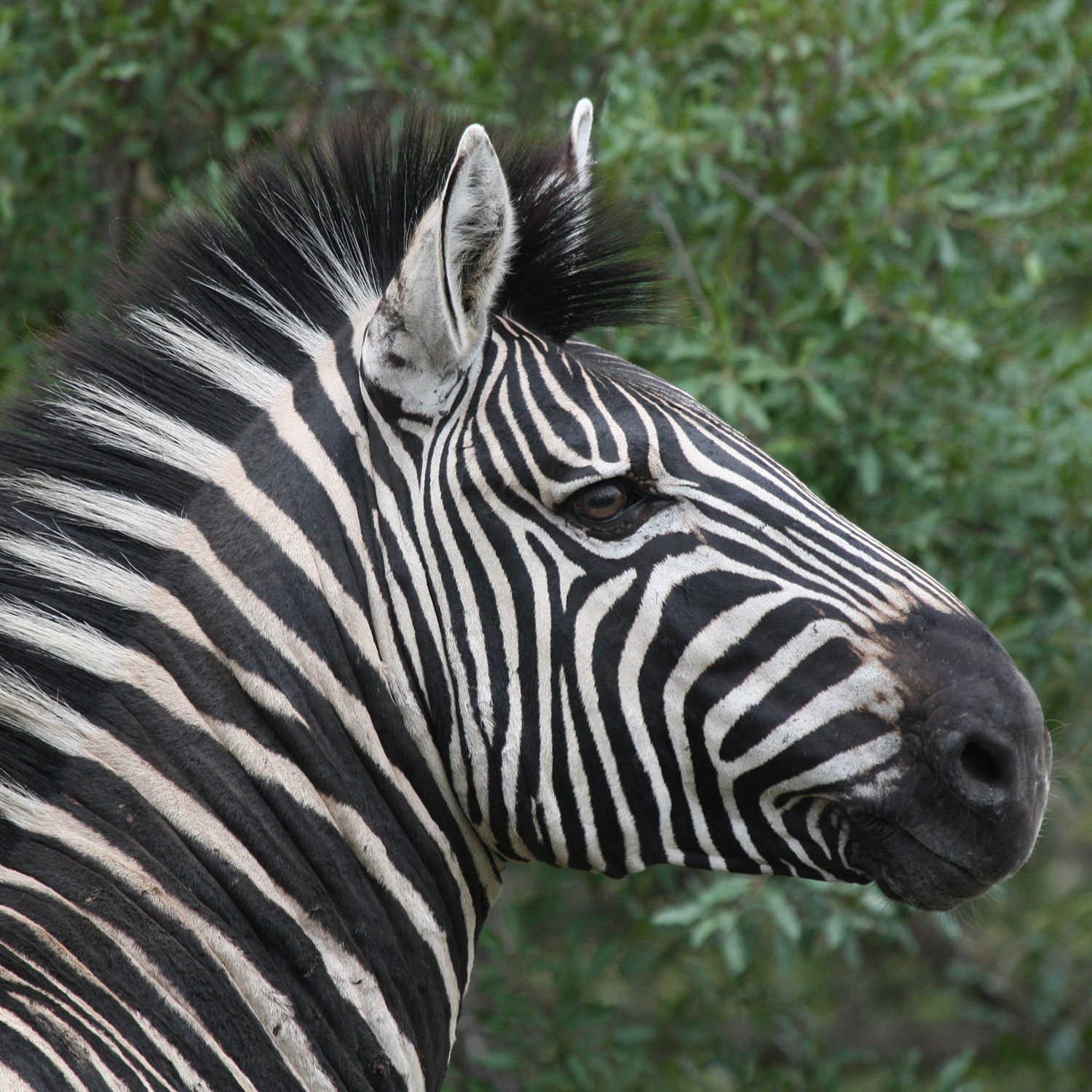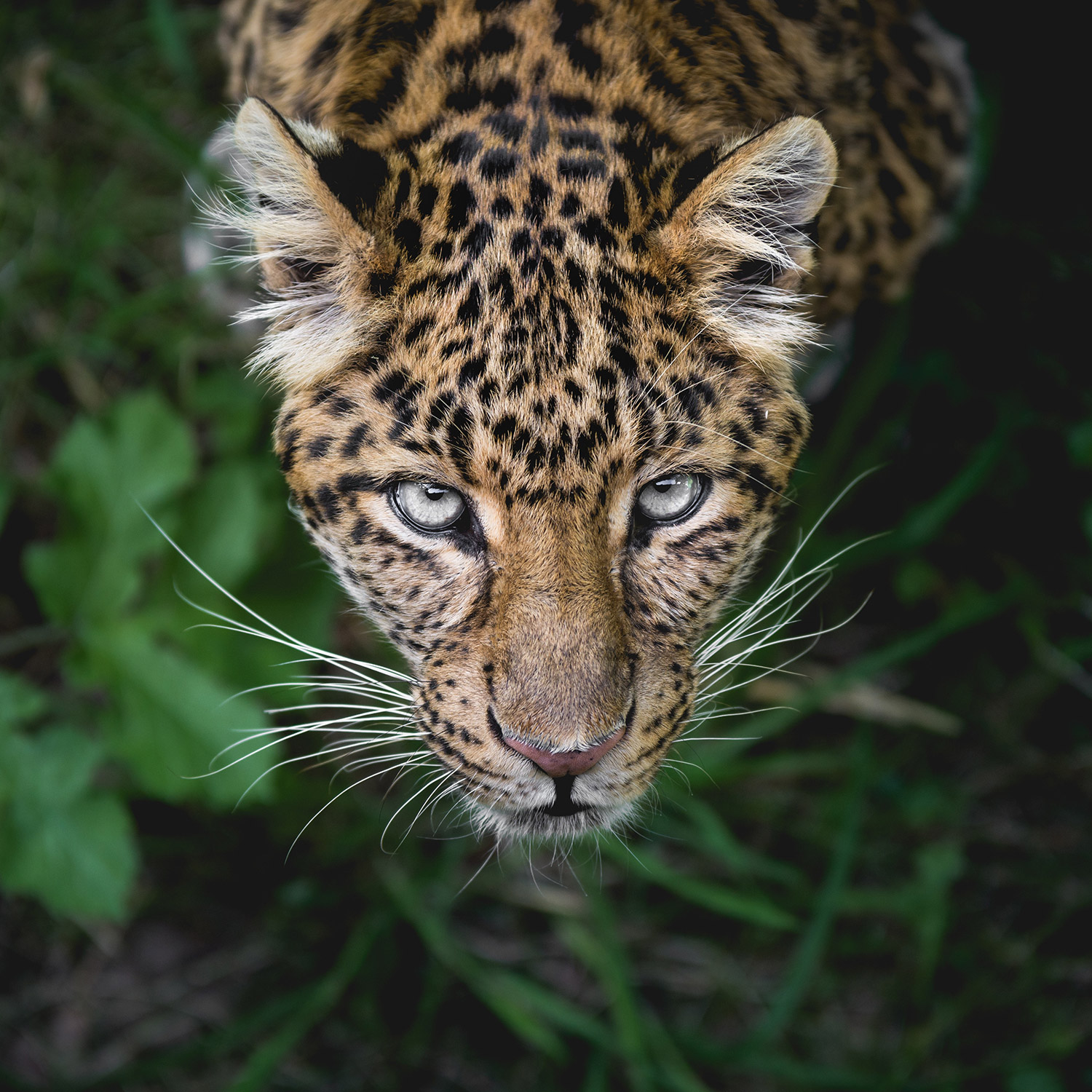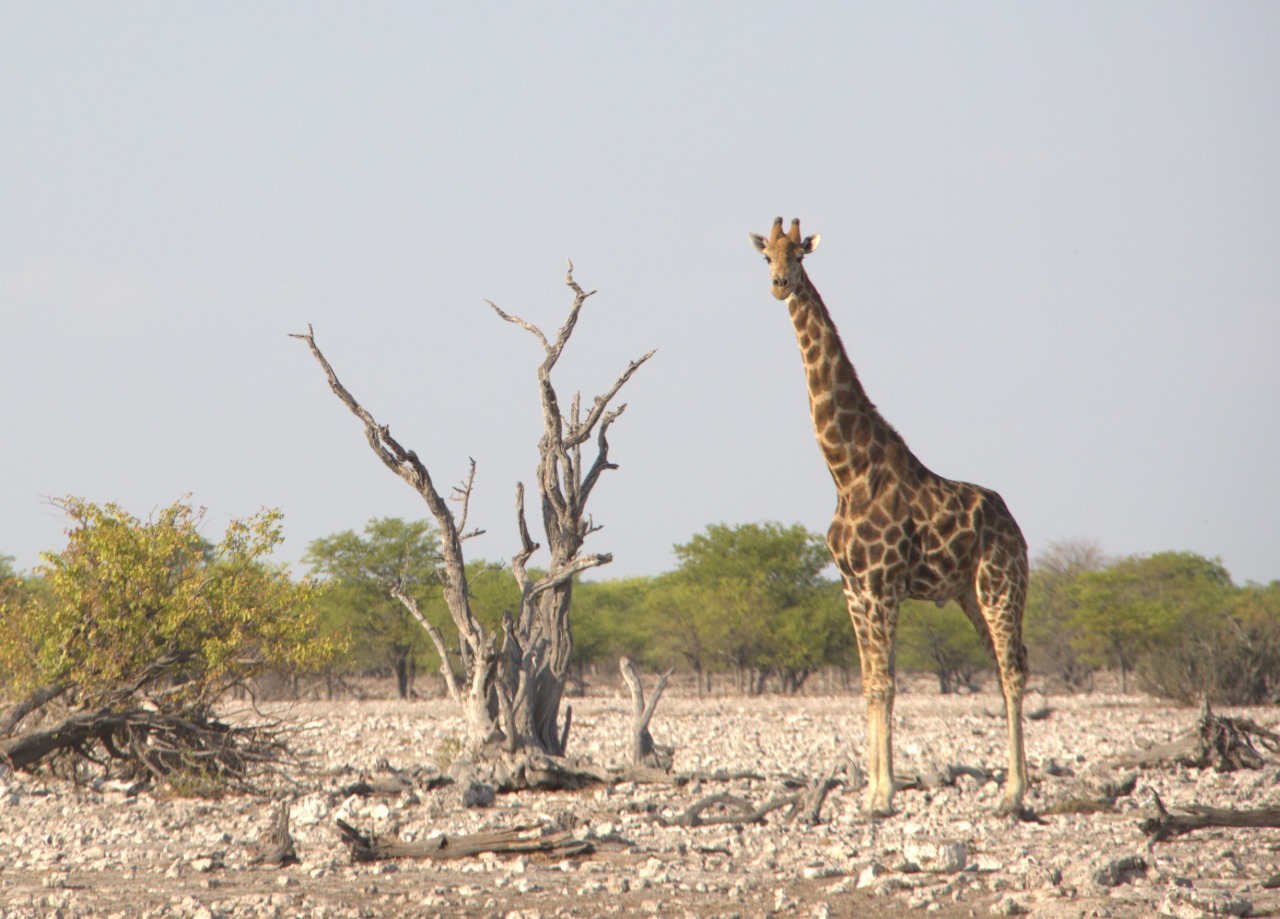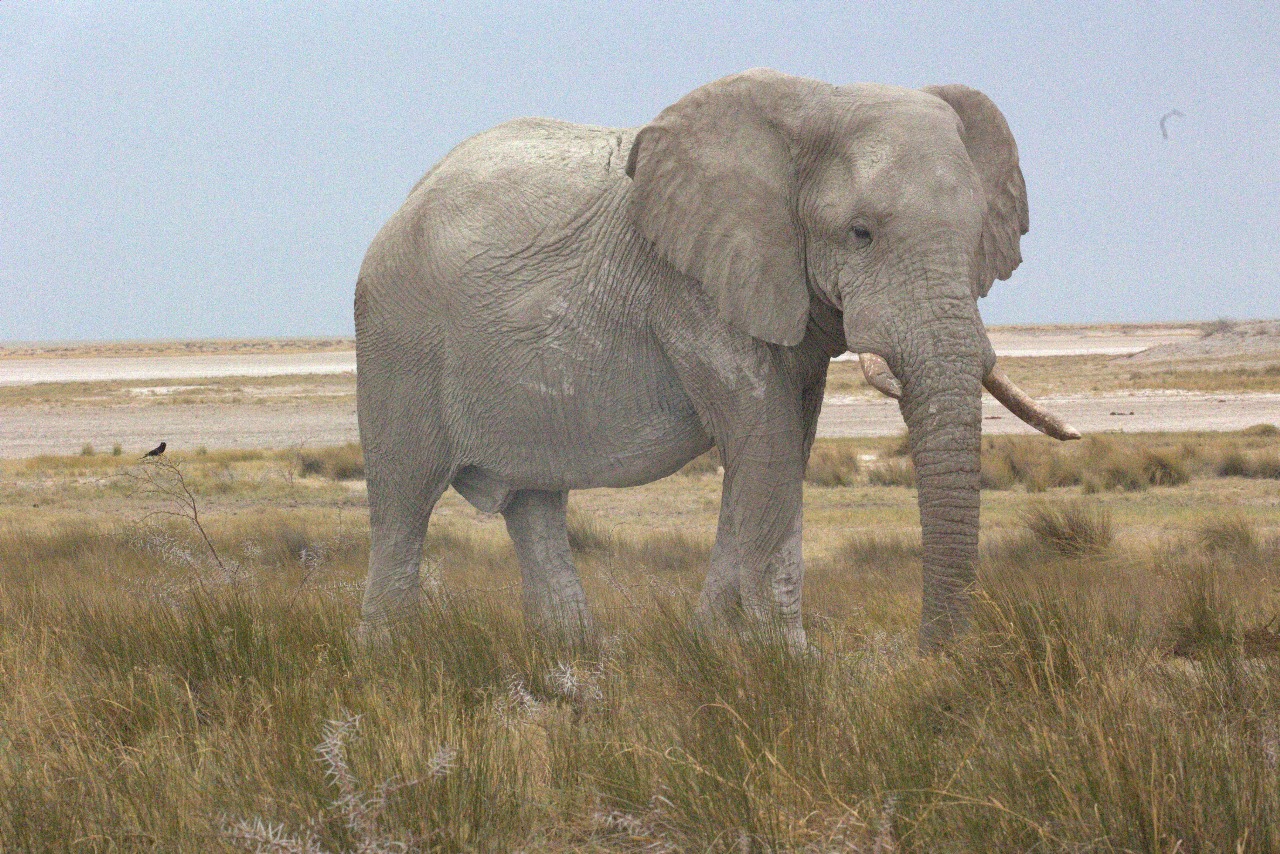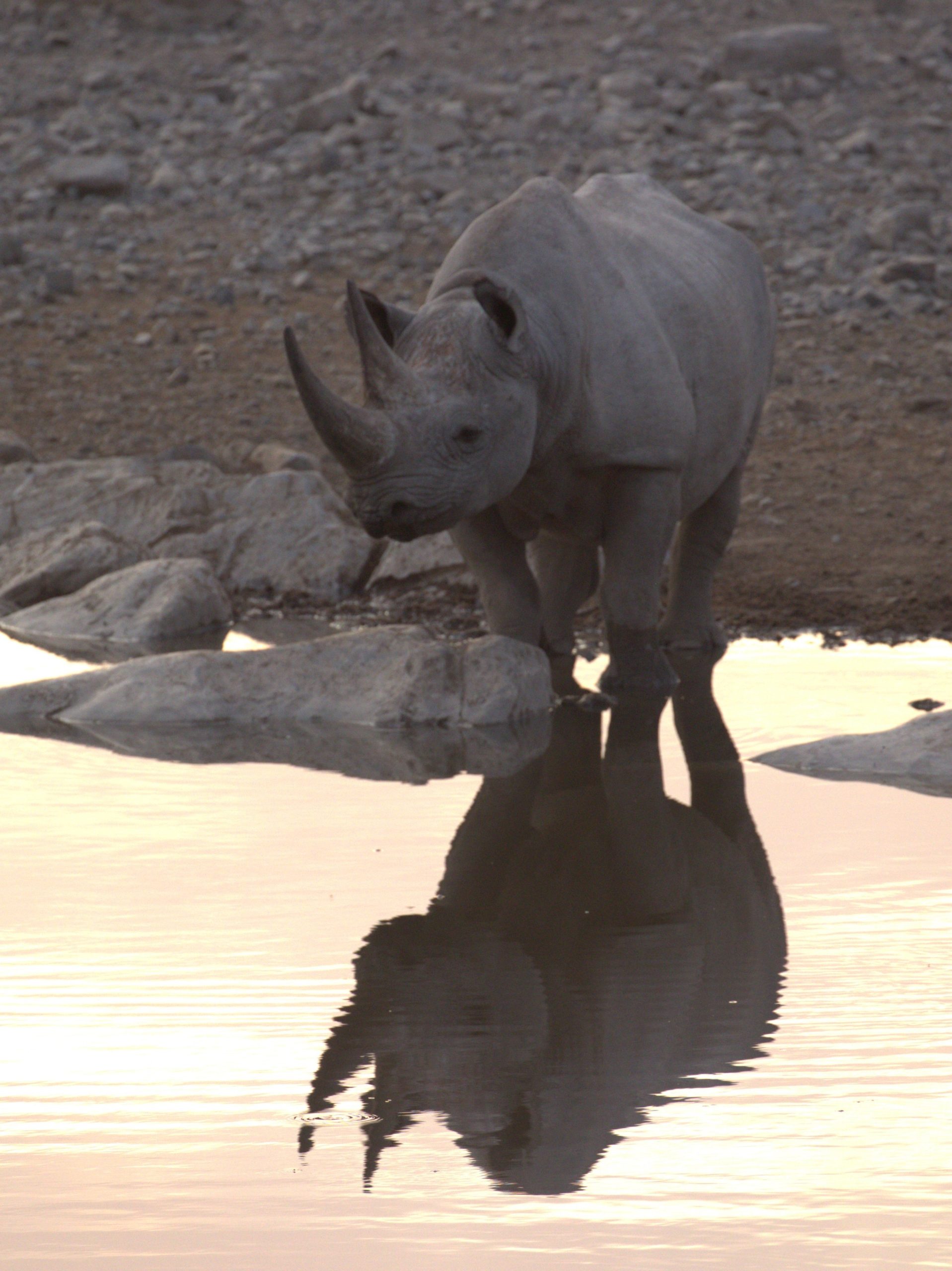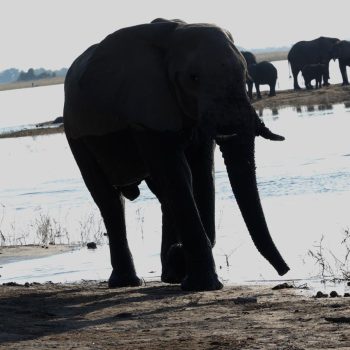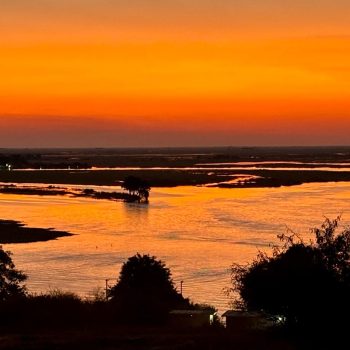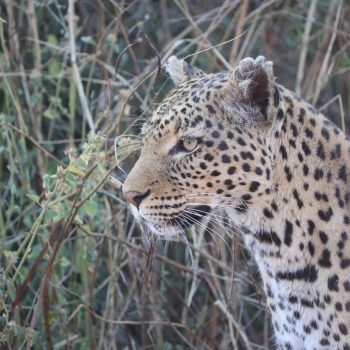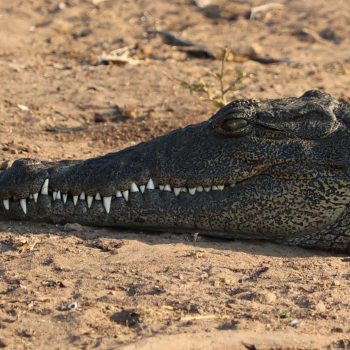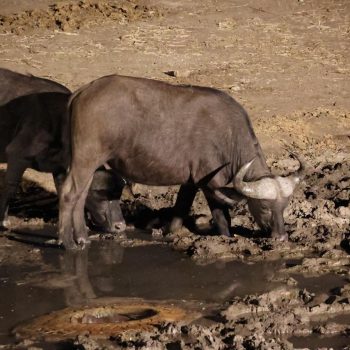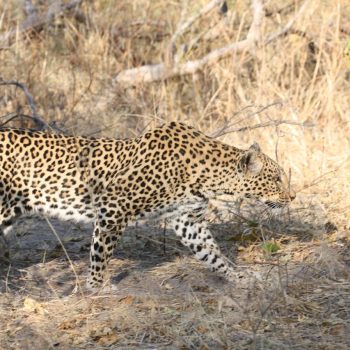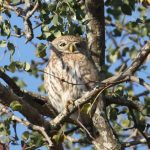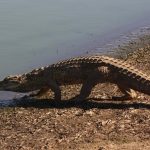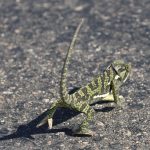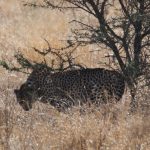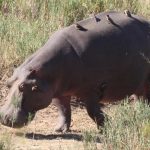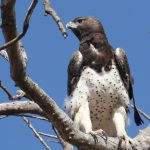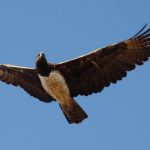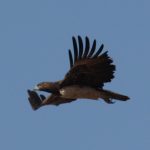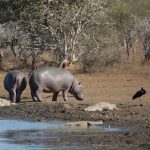Etosha , Namibia
Etosha National Park – Namibia
October 2024
I am not a big wildlife enthusiast, but this was definitely on my bucket list.
My interest stems from reading about Namibia in travel publications and especially after Rosalind and I experienced our first trip to Walvis Bay and Swakopmund.
My 80th Birthday was coming up and Rosalind kept on asking me what do I want for my birthday. I said that I would like to celebrate my birthday in Etosha.
However, I did not win this one, but the day after my birthday I was winging my way to Namibia.
I very seldom make use of travel agents , I much prefer making my own arrangements as I feel it gives me more control.
Driving up to Namibia in my opinion is okay but it takes 2 days as opposed to two hours flying time to Windhoek and then four hours drive time to Etosha. Seeing that I was going up alone I hired the smallest car available which was not such a good idea.
The flights on my regular carrier are either early in the morning (not my choice) or late afternoon. That meant I had to stay over in Windhoek.
The airport is about a 40 minute drive to Windhoek city so I opted for accommodation at a Bed & Breakfast just five minutes away.
Being in new territory, the drive to Etosha was something different. What really amazed me were the troops of baboons around Windhoek. There is not much vegetation there and I wondered what they ate.
A road block at the entrance to Etosha entailed completing a questionnaire and having to declare that you were not transporting meat in and out of the park.
The main camp and reception, is at Okaukuejo approximately 15 kms from the entrance. My first impression was of disappointment as the buildings and facilities felt like being in the early ninety’s. I doubt that any upgrades had been done since Namibia obtained independence. The shop was not the greatest and the ice cream freezer was empty and switched off. I was dying to have an ice cream. The same situation at Halali camp, I was dissapointed.
I was a typical ( I think ) tourist entering a wild life park. One drives slowly observing the speed limit ( or going slower ). The first thing one sees is a bird or birds nest and out comes the camera and you start clicking. What a waste when you start editing the days pics. Always make sure that you have spare batteries.
I pre-booked my accommodation and the only camp that I could get into was Halali. This camp is only a few kms from the entrance and is a convenient stay-over. It features a water hole with viewing from the side of the hill that is 1 hundred metres from the animals. Very good for sunset photography. Here one can see all brands of camera’s and size lenses being used by the tourists.
The accommodation at Halali is very comfortable and affordable but it definitely requires a make over. Meals offered are extras and they are decent, nothing out of the ordinary. Definitely cannot mess up an egg. At dinner time they have a buffet with only two choices. An indication of how outdated things are is when it comes to paying in the restaurant, the cash slip is still in Rand denomination. The service from the bar is terrible at night time because of the numbers of guests being served from only two cash points.
There are also several upmarket lodges that border the park. These are higher priced and suit those that earn in Dollars and Euro’s. The downside is that those who enters the park with lodge transport are limited to opening and closing times of the park, Some of these lodges are located in small game reserves with limited game.
Tourists arrive at Halali in bus loads late afternoon and they are out early in the morning. Camping facilities are good and very popular. The variety of camping gear and vehicles is in a class of it’s own and is impressive.
The worst part of the park is the roads , which are all dirt roads and very corrugated and the verges are very sandy. Etosha surrounds a salt pan and the roads are of a white type of soil. I found it difficult and challenging driving alone and trying to spot wild life, and concentrate on these bad roads. Especially driving a low car, a Toyota Corolla. I only saw one other urban vehicle in the whole park. The majority were high rise 4 x 4’s, SUV’s, campers and tour buses. The roads were so bad that in one day I overtook three vehicles with punctures, including a bus. These roads were definitely not a good advert and especially since the park must be one of the best cash generators targeted at overseas tourists.
A couple of weeks after my trip the Namibian authorities announced that they had utilised three graders to sort the roads out and that there were plans to tar the roads. (No dates given by the authorities,)
Of course this is the reason why one goes to Etosha. I suppose if you have seen animals in the Kruger Park or elsewhere, then an elephant is an elephant or a rhino is a rhino. However the big difference is their habitat. A noticeable difference is the dark brown patches on the giraffe as opposed to more orange like colour of giraffe in the Kruger Park. I even found the elephant were a dark grey compared to the light grey of elephant in the Kruger Park. The Oryx (Gemsbok) is one of the most beautiful species that I have seen. Generally one would find smaller herds of animals at waterholes and larger herds in the plains.
There are all the animals one can find there excepting hippo’s and crocodiles. Reason being there are no rivers. Water for the animals is mainly water troughs and small dams that are fed from borehole water.
To enjoy the park and have a good relaxing and photography time I recommend spending at least three days/four nights in the park.
There are “ cats “ in the park, but I think driving alone I must have missed them. Other guests in the camp did manage to see “ cats “.
Overall I enjoyed my trip and it is a must see.
Giant Fruit Bat Migration

Zambia , Kasanka
10 million bats. Quite an eerie thought for some but for others it is an interesting experience.
Kasanka National Park is a wildlife park in Central Zambia bordering the DRC. It is a small park only 360 sq.km in size but it is host to a fruit bat migration. This phenomena takes place every year from mid-October to mid-December when the bats fly in from the DRC forests to feast on wild fruit.
These bats are gold in colour and have a one metre wing span.
The fruit trees are mainly loquats and waterberry.
Guests are accommodated in two camps consisting of huts and a third area for campers. The latter is a popular site for “birders”.
The camp where I stayed consisted of eight huts on the edge of a lake.
It was so peaceful with sightings of elephant, hippo’s, Fish Eagles, Sitatunga, monkeys etc.
The event occurs twice a day at sunrise and sunset. The sunrise event meant getting up at 03h30 and down a cup of coffee and a rusk. Then onto the back of an open Landy wrapped up in a blanket and wind our way through the forest to a hide.
The tallest hide, known as the BBC Hide, is approximately fifteen meters to the top platform. The ladder to the top was quite rickety that even the pilot that accompanied me was nervous to climb up this “thing”.
Come sunrise, one can hear the sound of the “sea” approaching. Then this black blanket appears overhead and circles for about twenty minutes. It is an unbelievable
experience of a lifetime. Of course, not everyone’s cup of tea. The other beauty was the colour of the sky, the clouds and landscape.
Sunsets were equally beautiful but a different beauty.
Only guests that had made reservation in the camps were permitted access to the hides.
I was very fortunate and honoured the one day that I was on my way to canoe up a river near the Congo to view kingfishers.
The head guide said that seeing we are the only ones in that area that day, he and the scout will take me into the conservation area.
This meant that I could come up close within touching distance of the bats.
My flight up from SA now became a thousand times more exciting.
My photographs below one can view vultures in the trees waiting for the branches to break under the weight of these colonies of bats so that they can “clean” up the bats that land on the ground.
Canoeing up the river I managed to get some good photographs of reflections on the river.
Chobe National Park - Botswana - 2025
Chobe – June 2025
We booked a trip to Chobe Botswana with our grand-daughter Maxine for four (4) days at Elephant Valley Lodge. This lodge borders Zimbabwe and is about a twenty (20) minute drive to Chobe National Park. It is a luxury tented camp.
We flew to Kasane from Johannesburg where we were collected in an open Safari vehicle. The minute you step up and take a seat, one gets a type of adrenaline rush. We just could not wait to off-load our luggage and get going into the bush.
The late afternoon drive was from 15h00 – 18h00. Being winter it was a bit cool sitting on an open vehicle, particularly once the sun started disappearing. Anyhow, we were supplied with pancho’s. Botswana is big elephant country, and they were in abundance. Very friendly I must say. Of course, what is always in large numbers in the parks are Impala. The big thrill is seeing lions and leopards. One day we went on a sunset cruise on the Chobe River and experienced large numbers of elephant and hippo’s. In addition, there were crocodiles, water monitors and one of my favourites, the jacana bird.
The sunset on the Chobe River was one of the best I have experienced. Elephant Valley Lodge was upmarket with everything included in the package. The food was good, service was good, and in the evenings a buffet was served around a fire. During the day and in the evening, we experienced elephant, giraffe, impala, kudu and baboons drinking at the water hole.
Chobe was a great experience and should be on every wildlife enthusiasts bucket list.
Kruger National Park - June 2025
KRUGER NATIONAL PARK – JUNE 2025
When going to a game park what do you look out for?
Is it the big five, little creatures, birds and/or flora.
If you have your eyes open it could be a dung beetle, a chameleon, a sun lizard or even an owl camouflaged in a tree. But whatever it is there will always be excitement when one comes across something that you have never seen in real life before. Or for that matter many years ago.
This trip, just after we entered at the Orpen Gate there was a Chameleon walking across the road. This kind of thing one would not see if you had your eyes peeled in the bush looking for that illusive cat. So, it should be a good idea if one of your passengers is given the task of looking for something other than the Big Five. Even a crocodile, in most cases one sees them lying on a sand bank or sliding into the water, In my case I was excited to take a pic of a small crocodile walking into the water. A walking crocodile always looks more terrifying.
Maxine managed to get some good pics of an eagle flying overhead. With her beady eyes she also managed to get a nice shot of an owl.
This was good two days with Rosalind, Elaine, Monique and Maxine
